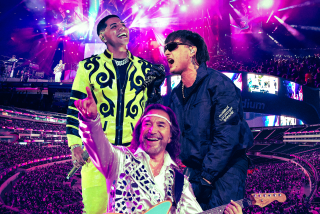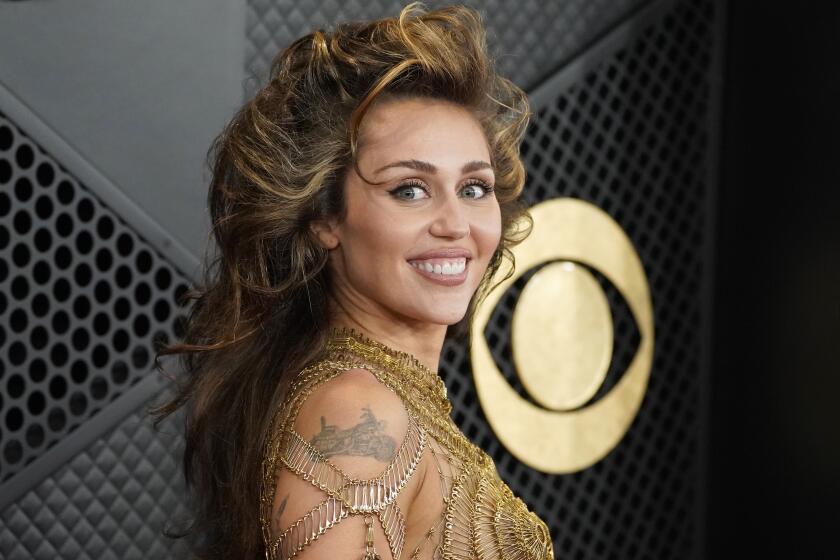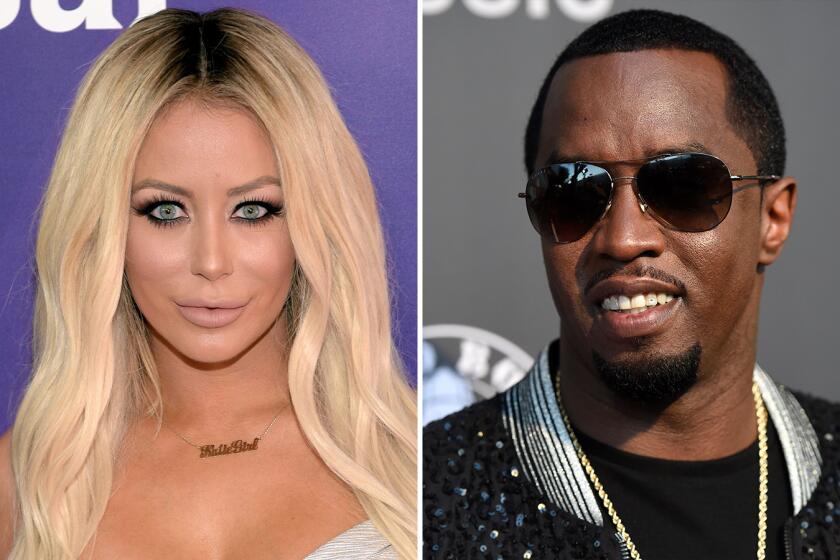Kimbra brings ‘Vows’ to the Fonda Theatre

An experienced presence in her native New Zealand, Kimbra bent American ears -- and quite a few of them -- earlier this year as the female voice on Gotye’s Hot 100-topping “Somebody That I Used to Know.” But that acoustic quirk-pop hit only hints at a bit of what Kimbra does on “Vows,” her appealingly scattershot solo debut. It flits from jazzy electro-pop to muscular art rock to one tune that sounds like it was written for TLC’s “CrazySexyCool.” Pop & Hiss caught up with the 22-year-old singer-songwriter at a Studio City cafe ahead of her shows Wednesday and Thursday at the Fonda Theatre.
You’re playing Los Angeles not long into your first North American headlining tour. What should people who’ve heard “Vows” expect?
The live show is quite a different deal. Playing a record as all over the map as mine would be hard onstage.
OK, so we can agree that “Vows” is all over the map.
For sure, and I put that down to the fact that it’s my debut record. It’s your chance to throw all the colors at the canvas, move them all around and see what comes out of it. I’d like to think that the thing that ties the record together is my voice.
How’s the live show differ?
The guys in my band, their favorite bands are Mr. Bungle, Jaga Jazzist, the Mars Volta -- you know, prog rock to heavy metal. So they have a much more aggressive, rhythmic approach to the songs. They’re just revved up 10 notches.
I like the idea that a song exists outside a record or a performance -- that it’s presentable in an infinite number of ways.
Totally. Music should evolve, and a song should grow as you acquire new influences. People use the term “overproduced,” which I find such a funny idea. To me, the point of being in the studio is to indulge in the production: “Let’s do all these layers and put all these psychedelic effects on my voice because we can!” That’s the fun of it.
Do female voices lend themselves more readily to that idea? You think of Björk or Neneh Cherry, whose records have always covered a lot of ground. Not a lot of dudes do that.
Jeff Buckley, I think, was one that explored his capabilities as a vocalist. I mean, look at the covers, going from Nina Simone to Nusrat Fateh Ali Khan to Led Zeppelin -- that’s three very different worlds. And he made them all feel like his own. Chris Cornell too.
Are you a fan of great voices?
I have my favorites. But these days my favorite bands are, like, Battles, Mew, Cornelius, Nine Inch Nails. They’re not all big vocalists, but I’m just excited musically by what they do.
Which came first for you: singing or working with an instrument?
I’d sing Britney Spears songs and silly stuff as a little kid. But around the age of 14, I picked up a guitar and learned Stevie Wonder songs and jazz inversions and got obsessed with the sound of a major 7 chord. Then at 15 and 16, I was introduced to Miles Davis and Björk and Jeff Buckley, all by this one guy who made me a mixtape. And around that age, I started singing more seriously, but it was more about creating. The thought of bringing something to life from the ground up -- I loved that, and the Boss 8-track recorder allowed me do that
Where’d you get the recorder?
Borrowed it from the high school music room. This clunky old thing.
Some songs on “Vows” seem to borrow elements from 1980s funk and R&B. Are you into that music?
Yeah! I was born in 1990, and before I got into more experimental stuff I was into Destiny’s Child and R. Kelly, all of that. And still, I think that seeps subconsciously into what I do. The guys in my band are more in their late 20s and early 30s, and they’ve introduced me to stuff from the ‘80s: Bobby Brown and Scritti Politti, even Prince and Michael Jackson. My first Michael Jackson record was “Invincible”; my first Prince record was “Musicology.” So I’m working my way back -- like, “Oh, ‘Purple Rain’!” It’s been big for me to discover all that.
What do you like about it?
There was so much syncopation in that music, and that was normal on the radio. In the ‘80s, everything was so technical. People weren’t loving that; they were loving the hook. But beneath the hooks -- in the Quincy Jones stuff, especially -- there’s so much going on. Now, pop music makes it so easy for people.
“Somebody That I Used to Know” has been pointed to this year as a different kind of pop music.
And it’s not heavily syncopated or anything. But in another way it does defy formula -- it doesn’t give everything to you in the way you expect. It holds up a long time before that chorus hits. And what Gotye is using sonically -- a jazzy shuffle and a xylophone -- it’s not the normal palette of a pop song. I think that’s why it’s pricking people’s ears up.
The song has been mentioned many times alongside another unlikely No. 1 hit, “We Are Young” by fun. What do you think the two songs share?
A sense of unpredictability. There’s a complete tempo change in the fun. song; it’s leading to something, then you get something totally different. I think both songs challenge the listener a little bit.
How much ownership do you feel over “Somebody That I Used to Know”?
That’s the funny thing: Sometimes, I feel like people give me too much credit for it. It’s Gotye’s song. There’s an emotion expressed in the performance that people connect with, and I take ownership of the fact that I meant it and that it comes from a real place. But the song was written when it came to me, you know what I mean? He needed a voice that would translate the right emotion. And I feel happy that I could do that for the song.
ALSO:
Blur’s Damon Albarn wants you to see more opera
Spotify exposure pays off for Mumford & Sons’ ‘Babel’
Esperanza Spalding to host show on Magic Johnson’s TV network
More to Read
The biggest entertainment stories
Get our big stories about Hollywood, film, television, music, arts, culture and more right in your inbox as soon as they publish.
You may occasionally receive promotional content from the Los Angeles Times.











